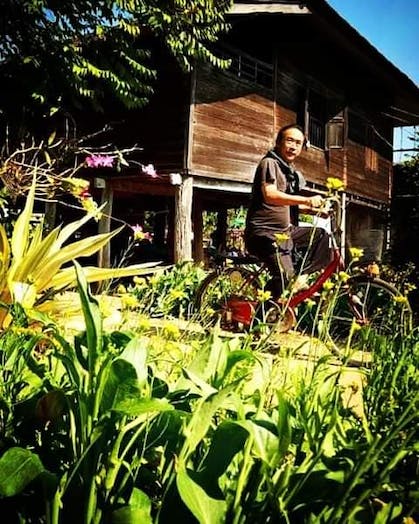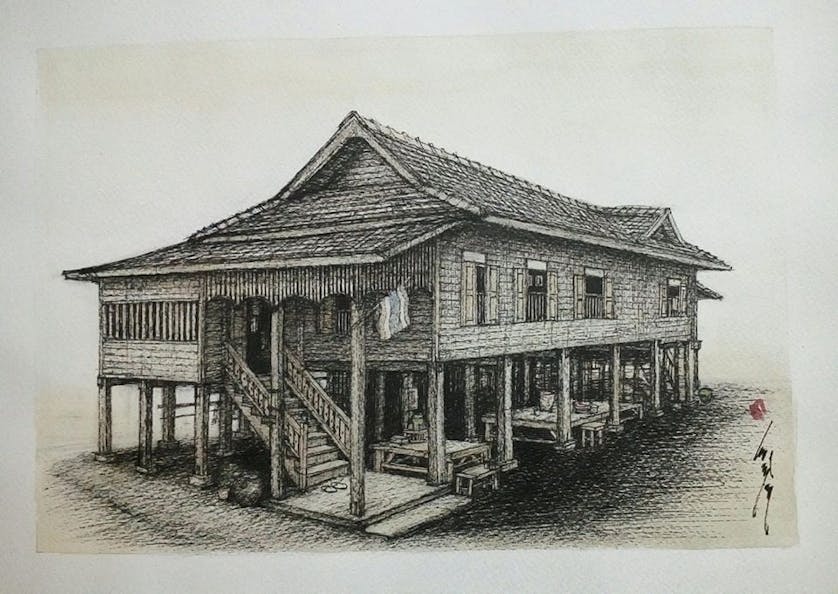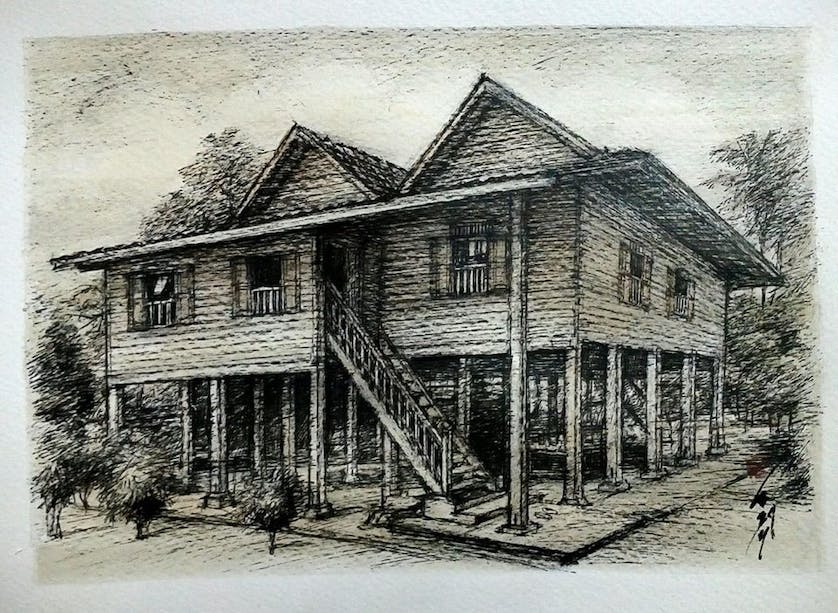“When I was a little boy growing up in my little village in Sanpatong I remember watching old houses being dismantled and sold off for wood and feeling as though a part of myself was being dismantled, that little pieces of me were being taken away,” said Roongroj Piamyossak, an artist, activist and retired village head who has spent the past two years chronicling the old houses of Sanpatong District.
“I graduated in fine arts and am an artist, and I returned home to my own village where I actually become a very controversial village head for about five years, getting into all sorts of trouble with the status quo,” he laughed. But seeing house after house in his beloved home town disappear, only to be converted into a trendy boutique hotel or café in the city was heart breaking and no laughing matter, he said.

Two years ago, off his own back, and out of his own pocket, he began to visit all 120 villages in Sanpatong’s 11 sub-districts, scouring them for old homes. “This is a community art project that I felt compelled to do,” he continued. “I grabbed my camera, note pad and recorder and started talking to home owners. What I learned was that many of these houses which were traditionally kof huge importance to the people are today becoming subject to inheritance inter-fighting. Whereas traditionally families would live for generations in a house, even having annual ceremonies where families would gather to honour the ancestors who built the house, today descendants often fight over their homes, sometimes deciding to sell them off and split the money. This is a crying shame.”
Roongroj began talking to home owners, sketching their houses, filming their interviews, listening to their stories and photographing their homes. It was slow and hard work. “But I began to see that when I showed interest, when I saw value in their houses, these villages also began to see their own homes with new eyes. They began to appreciate the value. That is my aim. I want people to return to their homes, to live in their ancestral houses. So I sit and I listen to their stories. And by retelling it, they remember how important it is.”

Roongroj’s one-man project has been gaining some momentum, with some of his Facebook posts reaching over 1,000 likes and 1,000 shares. This has caught some people’s attention – Citylife included – and he is now working with the Siam Society as well as the Faculty of Architecture, Chiang Mai University. He has since expanded his project to include Mae Wang, Lamphun and Hang Dong.
“What I would love to see is the families proudly returning to their homes. We can then go and say to the trendy café and boutique hotel owners that if they want the house, instead of dismantling one, they can have the template for one which we can draw up. There are also skilled silversmiths and woodcarvers, people who used to be highly admired for their skills in the past, but are now just daily wage labourers. We can then give them more jobs and support them in replicating these houses for the modern market. There are so many possibilities for what we can do.”
“My aim was initially to show value to the descendants, but it has grown beyond that now. I feel that we are onto something which could potentially be used as a model for communities across Thailand to help preserve and make relevant what has long been neglected and ignored. These are not objects. They have meaning and legacy and history. We are weird. When we see that other people see value, we start to see value.”
“Sanpatong is of particular interest, I believe, because we have traditionally had up to eight ethnic groups living here in harmony. Their influences can be seen in the architecture, whether it’s Lawa, Yong, Muang, Chinese or even Indian.”
“All those pieces of me which I felt was lost every time as a young boy I saw a house being dismantled has begun to be mended again. All the pieces of my life are coming back, I feel like I am being pieced back together.”
A book featuring 101 old homes of Sanpatong has already been published and if interested you can order by going to Roongroj’s eponymous Facebook page and contacting him. You can transfer the 350 baht to the Kasikorn Bank account 121-2-11972-1.
Citylife asked Roongroj to choose some of his favourite houses to share with our readers:

- Nam Wang Old House
This house was built in 1972 by Por Uikong Ta-ai, 89, who used to be a silversmith. “When I built this house I had two thousand baht. But I had skills which I had used to build so many houses before so I decided that since I was in my forties, I needed my own house. With two sons and a daughter, it gave me the impetus to turn our little rice shack into a real home. I called out to all the villagers to help me and all I had to do was feed people and bring in chicken and rice and they came with their skills, time and labour. Whenever I had money to buy food you would hear the sound of hammers on nails, and when I had none it would go silent.”

- Baan Ton Kaew
I like this house because it really evokes memories which are so very familiar to me. This house is in Makam Luang sub-district and it oozes nostalgia. You can feel the memories here.

- Huan Boran Nam Wang
Every time I arrive in a village and find an old home in a good condition it feels like it is representing its entire community in the best way. Like a living museum for the village, each of these unique houses tells a story and has relationships with all the people who have lived in it. But if I see a house that has been abandoned, that is standing empty, my chest tightens and I feel such sadness to think that the home is no longer appreciated by the descendants of those who built it. I dream that a descendant will return to claim it and turn it into a home again, creating many more memories to come.
Follow Roongroj’s journey as he pieces together his story here.







